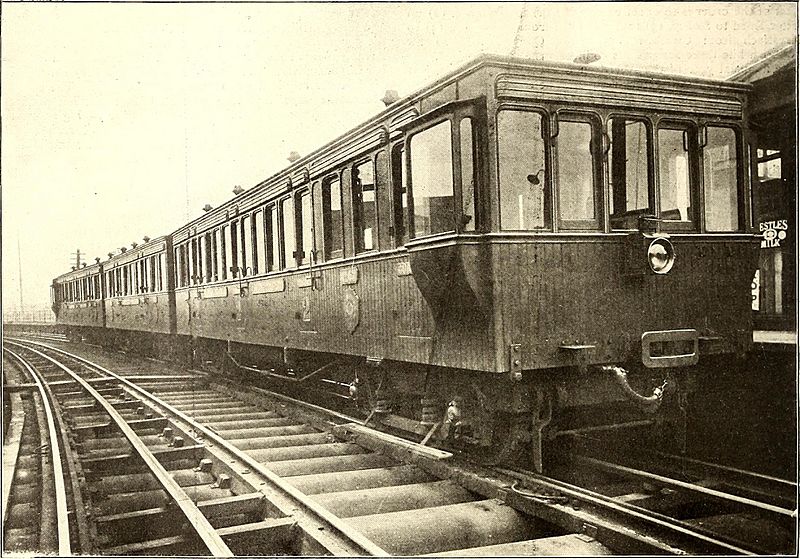Image: The Street railway journal (1902) (14574158560)

Description: Identifier: streetrailwayjo201902newy (find matches) Title: The Street railway journal Year: 1884 (1880s) Authors: Subjects: Street-railroads Electric railroads Transportation Publisher: New York : McGraw Pub. Co. Contributing Library: Smithsonian Libraries Digitizing Sponsor: Smithsonian Libraries View Book Page: Book Viewer About This Book: Catalog Entry View All Images: All Images From Book Click here to view book online to see this illustration in context in a browseable online version of this book. Text Appearing Before Image: hing about fifty-five tons.With the old equipment the entire distance was run in 32 min- perfect action of the brakes during the retardation of the train.The negative acceleration reached 4.8 ft. per second per secondrecorded, which is probably near the practical limit in actualservice. The diagrams of current in pressure at the motors arerecorded and are of interest in determining the power consump-tion at different parts of the run. The frequent stopping of trains running at high schedule speedwill consume from 120 watts to 150 watts per ton mile. If, how-ever, the stops are far apart, the watts required are from 90 to100 per ton mile. In the experiments recorded the watts con-sumed were 137 per ton mile, or about 6.35 kw per train mile run.The results of the new accelerated service are shown in the fol-lowing table. In consequence of the successful issue of thesetests, the Liverpool Overhead Railway have instructed Dick,Kerr & Company to re-equip the whole of the rolling stock. Text Appearing After Image: ELECTRIC TRAIN ON LIVERPOOL OVERHEAD RAILWAY utes including 16 stops, or practically at a scheduled speed ofV2l/2 miles per hour. This requires a minimum of 14 trains run-ning at five-minute intervals to handle the traffic. About twelve months ago, however, it was decided to experi-ment with a new equipment in order to ascertain what accelera-tion could be obtained, and Dick, Kerr & Company, Ltd., en-tered into a guarantee to run the whole distance—including 16stops of 12 seconds—in 20.9 minutes; in other words, to improvethe scheduled speed from 12^2 miles to nearly 19 miles per hour.The weight of the train, including 154 passengers, was 55 tons.A most careful series of elaborate tests and trial runs were madeby Mr. Cotterell, the engineer-in-chief of the Liverpool Rail-way, assisted by Mr. Mallock, and it was clearly demonstratedthat the new train would make the journey easily under 20l/2minutes. Acceleration curves obtained from these trials are givenon the following page. Note About Images Please note that these images are extracted from scanned page images that may have been digitally enhanced for readability - coloration and appearance of these illustrations may not perfectly resemble the original work.
Title: The Street railway journal (1902) (14574158560)
Credit: https://www.flickr.com/photos/internetarchivebookimages/14574158560/ Source book page: https://archive.org/stream/streetrailwayjo201902newy/streetrailwayjo201902newy#page/n127/mode/1up
Author: Internet Archive Book Images
Permission: At the time of upload, the image license was automatically confirmed using the Flickr API. For more information see Flickr API detail.
Usage Terms: No known copyright restrictions
License: No restrictions
License Link: https://www.flickr.com/commons/usage/
Attribution Required?: No
Image usage
The following page links to this image:

